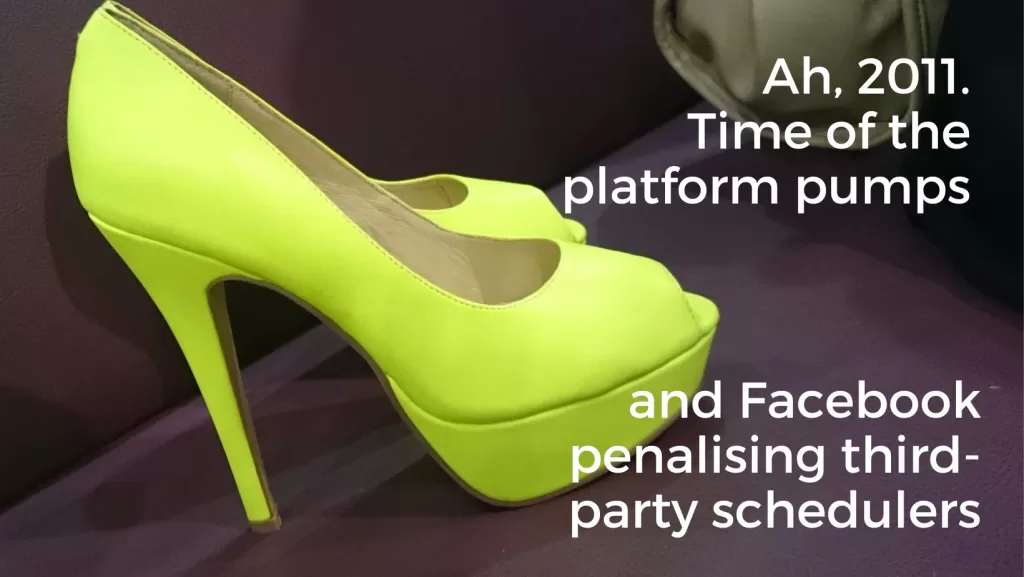
Back in the day, when dinosaurs roamed the internet and platform pumps were IN (I mean, how awesome were my fluro yellow heels?), there was this rumour.
A whisper that using third-party tools to post on platforms like Facebook was akin to social media sabotage. Legend had it, Facebook would see your post, scoff at its third-party origins, and toss it into the abyss where reach and engagement go to die. Up until around 2011, this wasn’t just a story; there was some truth to it.
Around the time everyone was getting over the fact that planking was indeed a thing (thank goodness there aren’t any photos of me attempting that trend), Facebook did a 180.
Suddenly, it wasn’t about where the post came from; it was all about the quality. If your content was good, Facebook’s algorithm was going to treat it like the VIP it was, third-party or not.
And while I’ve held on to those yellow heels, Meta has moved on.
“…we recently made a fix that added more signals to detect good quality posting behaviour. This should improve the situation with the distribution of posts coming from third-party apps in the News Feed” said Facebook development consultant, Matt Trainer.
Fast forward to today, and social media platforms are rolling out the red carpet for third-party tools. Why? Because these integrations, via APIs, are the secret sauce to expanding their empire. These integrations are a win-win; they make life easier for users and keep the social media giants in their thrones of hashtags and likes.
Why would these platforms bite the hand that feeds them? Spoiler alert: they wouldn’t.
Despite clearing the air, some people still get twitchy at the thought of using these tools. Why? Because confusion between reach and engagement is real.
Reach is about how many eyeballs see your post, while engagement measures who’s actually vibing with it. And yes, there’s been chatter that third-party posts get less love in the engagement department. But here’s the thing: it’s not about the tool; it’s about the content.
Chances are, the content being scheduled wayyy in advance is what we call evergreen style content. It’s the stuff that explains what you do, who you are and things about your business that don’t tend to change. What’s the problem there? That kind of content doesn’t garner great engagement compared to, say, a pic of your team celebrating Cake Day with a food fight in the office kitchen.
Evergreen and scheduled content has it’s place. It’s great for new stalkers (ahem, potential clients) to see what your business is all about.
Still, if you’re sitting there, scratching your head, wondering why your third-party posted content isn’t doing cartwheels in the engagement arena, consider this: maybe it’s not tailored enough for the platform, or maybe it’s about timing, or perhaps it’s just a bit too robot-like for your human fans.
Seriously though, how good were these shoes?
